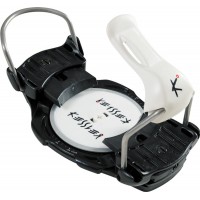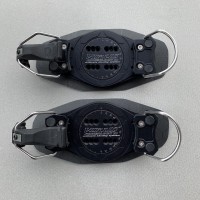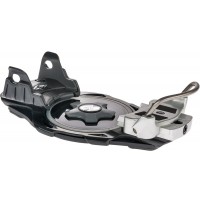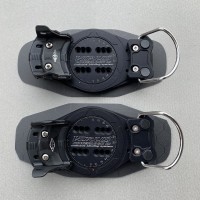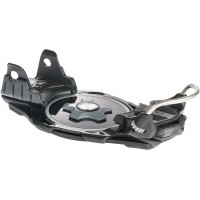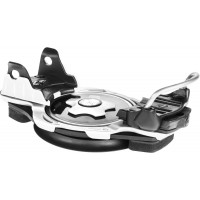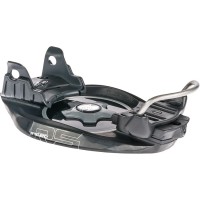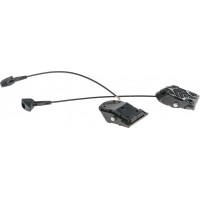Snowboard Bindings
Alpine snowboard bindings are plate bindings that are much stiffer than the common strap bindings found on most snowboards. The bindings use a variety of different mechanisms to keep the boot in place. The traditional is a set of bails and a toe clip. Other step-in systems like the Intec system have also become popular. Some manufacturers also have their own proprietary step-in systems. Stances are set up at much steeper angles, that is, much more forward facing, than the freeriding style. Typically angles range from 50 to 65 degrees. In addition, some riders use cants to further refine their stances.
Soft snowboard bindings are your direct connection to your snowboard, transferring your muscle movements to your board. If your snowboard bindings are well matched to your board and style, you'll have a better riding experience. Snowboard bindings can fit into different style categories. As important as it is for binding flex to match your style of riding, you should also determine the amount of binding flex you would want according to the flex of your boot. It would not make sense to have a stiff binding and a soft boot or vice versa. For the best results in tailoring your ride to fit your style, make sure that the flex of your bindings matches closely to the flex of your boots. Snowboard soft bindings can be divided into two general categories:
- STRAP-IN BINDINGS - These are the most common type of bindings. They usually use two straps (one above or across the toe and one across the ankle). Strap-in bindings offer plenty of options for support, cushioning and custom adjustments. They are suitable for all styles and conditions of riding.
- REAR-ENTRY BINDINGS - These are also called Speed Entry Bindings. They have a hinged high back that drops down like a draw bridge allowing you to simply step into the binding. In addition, the hinged back promotes quick and easy access in and out. No more making your skier friends wait for you. Rear-entry bindings are usually preferred by more comfort-oriented riders.
Refine Search
F2 Race CNC
F2 RACE CNC - Ultimate race alpine snowboard power binding F2 RACE CNC - High End plate b..
KESSLER K.tech Alpine Titanium
KESSLER K.TECH ALPINE TITANIUM - Ultimate Standard Alpine Binding KESSLER K.tech Alpine T..
MOUNTAIN SLOPE Alpine Titanium
MOUNTAIN SLOPE ALPINE TITANIUM - Ultimate Standard Alpine BindingMOUNTAIN SLOPE ..
SG Performance Bindings
SG PERFORMANCE BINDINGS - Ultimate Performance Alpine Binding SG Performance Bindings&nbs..
VIRUS POWERLOCK III STD
VIRUS POWERLOCK III STD - Ultimate race alpine snowboard power binding. Standard version. Inclusive..
F2 Intec CNC
F2 INTEC CNC - Ultimate race alpine snowboard power binding F2 INTEC CNC - The CNC h..
VIRUS POWERLOCK III SI
VIRUS POWERLOCK III SI - Ultimate race alpine snowboard power binding. Step In INTEC version. Inclu..
F2 Race Titanium
F2 RACE TITANIUM - Ultimate race alpine snowboard power binding F2 RACE TITANIUM - High E..
F2 Intec Titanium
F2 INTEC TITANIUM - Ultimate race INTEC alpine snowboard power binding F2 INTEC TITANIUM ..
F2 Intec Titanflex
F2 INTEC TITANFLEX - Ultimate race INTEC alpine snowboard binding with integrated su..
F2 Carve RS
F2 Carve RS - Ultimate Freecarve alpine snowboard binding F2 CARVE RS - Freecarve front l..
F2 Intec RS
F2 INTEC RS - Freecarve step-in alpine snowboard binding F2 RACE TITANIUM - Comfort orien..
F2 Eliminator Carve Fastec
F2 Eliminator Carve Fastec - Ultimate rear-entry soft snowboard binding F2 ELIMINATOR CAR..
F2 Eliminator Carve
F2 Eliminator Carve - Ultimate strap-in soft snowboard binding F2 ELIMINATOR CARVE -..
F2 Intec Heel Adapter
F2 Intec Heel Adapter Compatible to all hardboots on the market, the Intec Heel adapter impre..

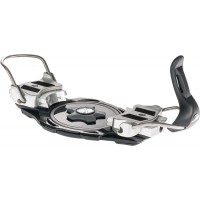
 Ask for Price
Ask for Price